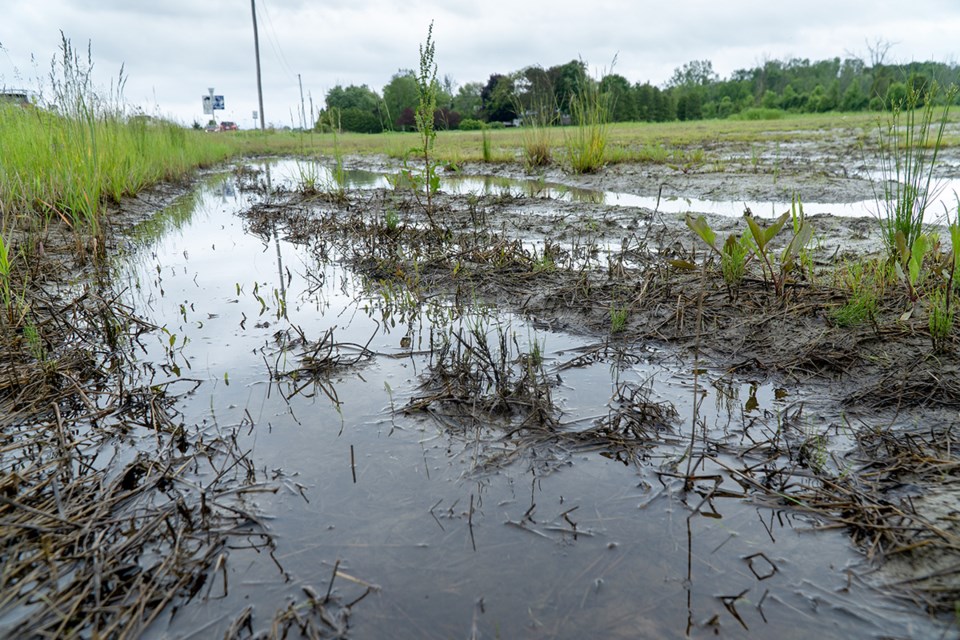Cathy Dobson
Sarnia is already feeling the impact of climate change and needs to prepare for extreme weather, says the city employee charged with determining what might occur over the next three decades.
Nancy Bourgeois, a planner assigned to spend two years evaluating the risk and drafting an action plan, is in the early stages of collecting data.

But she already foresees the challenge. Heavy rainstorms, winter thaw and freezing, more power outages, and greater stress on city storm and sanitary sewers are already occurring, she told a recent Green Drinks audience.
“We don’t have devastating forest fires and our city isn’t falling into the ocean, but we already have problems with extreme weather that are having huge impacts on our infrastructure,” Bourgeois said.
A ferocious 37.6-millimetre downpour on Sept. 11 was historically an event that happens every five to seven years. But such rains are occurring more often and taxing local sewers, she said.
Her stats show that from 1976 to 2005 Sarnia had annual rainfall of 828 mm. If nothing is done to mitigate climate change, local rainfall averages from 2021 – 2050 are projected to increases another 49 mm.
“In the context of everything else going on, the impact of that is concerning,” said Bourgeois. “So far we’ve been able to recover but it’s going to mean more repairs in the future, more damage and more money.”
At some point, council will have to decide how much it’s willing to spend on infrastructure to meet the challenge of climate change, she said.
Sarnia has spent decades separating storm and sanitary sewers so heavy rains don’t send raw sewage into city basements and the St. Clair River. But 17 to 19 kilometres of sewers are left to separate and, at one or two kilometres a year, the city remains burdened with inferior infrastructure.
Fluctuating temperatures are expected to play havoc through freezing and thawing over the next three decades if climate change isn’t stemmed. Though fewer freeze-thaw cycles are expected, said Bourgeois, more could occur in January and February.
“That means less snowpack on the ground and more frost damage that affects people’s water services, damages sewers, cables, roads and gas lines,” she said.
Climate change might have wide-ranging impacts beyond infrastructure, Bourgeois added.
It could potentially impact the mental health of residents through anxiety or depression. Extreme heat reduces productivity and threatens vulnerable people. Trees can become stressed and storms can leave cleanup crews scrambling.
“We’re going to see more insects, more disease, more mould because there will be so much moisture.”
Every department at City Hall will be impacted, Bourgeois predicted.
“Even if the people who say climate change is a hoax are right, there’s benefit to this work,” she told about 20 people at 100 Christina Street, where Green Drinks forums meet the second Wednesday of the month.
Bourgeois expects to update council with a progress report by the end of October and return in early 2020 with a draft of a climate change policy and adaptation plan. By 2021, it’s hoped the city will have an action plan in place.
Taking action to curb climate change, not just respond to its impact, is the goal, said Bourgeois.
“Good planning is a plan that’s doable, rather than a dust collector that’s not much help to anyone.”
